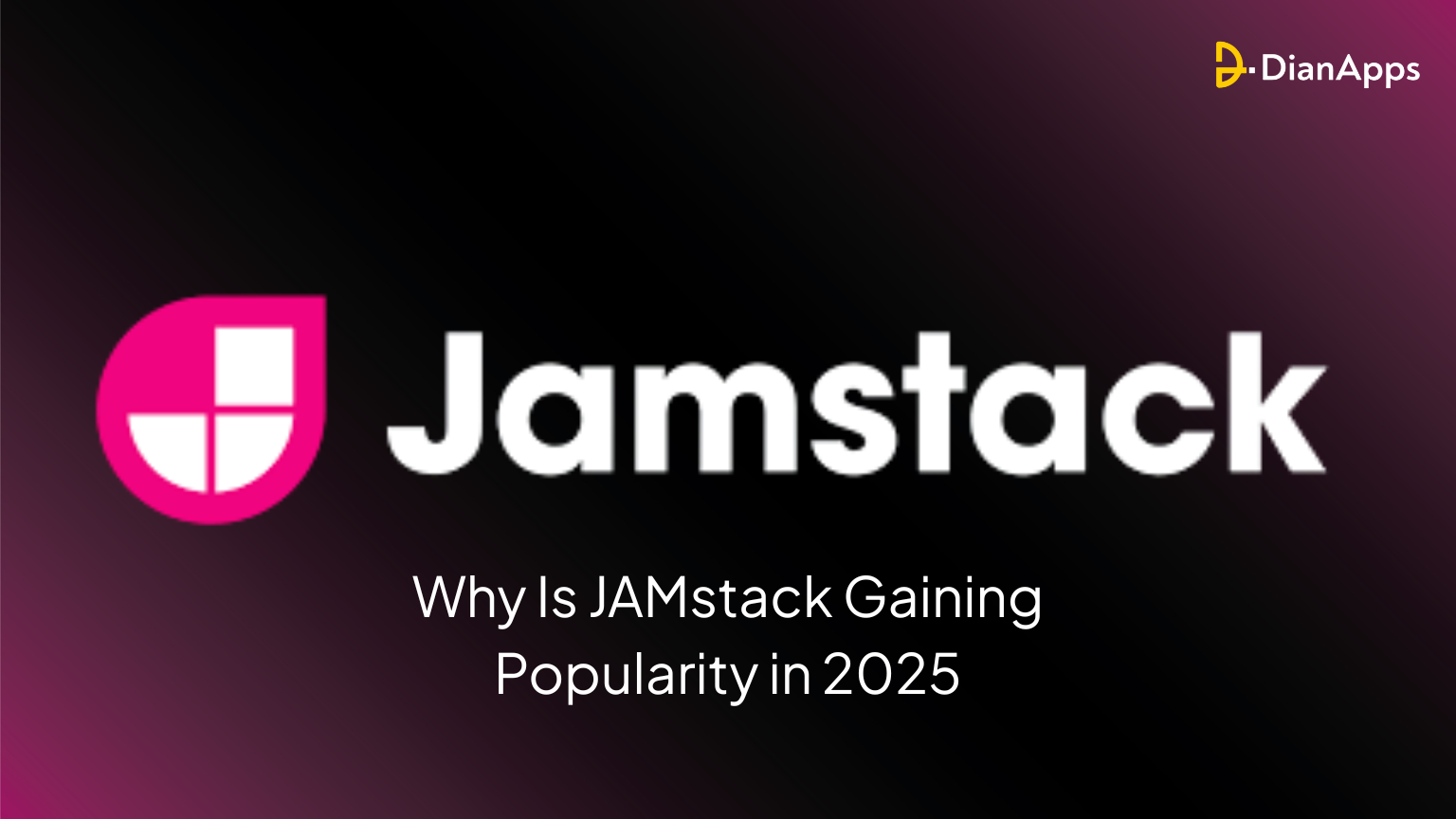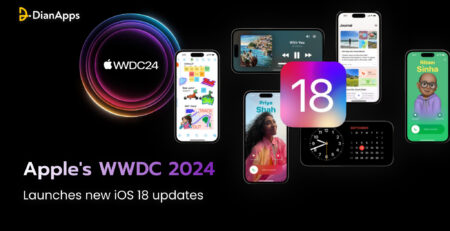Why Is JAMstack Gaining Popularity in 2025?
Tired of slow websites, messy code, and constant security issues? You are not alone.
To eliminate these problems in 2025, businesses and developers are ditching outdated architecture and embracing a modern solution that actually works: JAMstack.
If you are an advanced-thinking website development company or a business owner that cares about scalability, performance, and speed, JAMstack isn’t just an option, it’s your competitive edge.
Still wondering why JAMstack is gaining so much popularity?
Here are the real-world problems it’s solving:
- Slow-loading websites
- Complex backend setups
- Poor scalability
- Frequent security risks
- Developer workflow bottlenecks
- SEO ranking challenges
- Painful maintenance cycles
JAMstack isn’t just a hype, it’s a smarter way to build the web. In this blog, you will get to explore how it works, why developers use it, and whether it’s the right fit for your next web project.
What is JAMstack and Why Does It Matter in 2025?
JAMstack is a modern web development architecture that stands for JavaScript, APIs, and Markup. It majorly focuses on delivering fast, scalable, and secure web experiences by decoupling the frontend and backend.
- JavaScript: It is termed the dynamic component of the architecture. It is primarily used to manage client-side logic and add interactivity.
- APIs: It is referred to as the backbone of the JAMstack. It allows the website to pull data, perform backend operations, and interact with the database without relying on a traditional server backend.
- Markup: It is a pre-built static HTML file that is generated at build time. A CDN can offer these files directly, guaranteeing quicker loading times.

Why does it matter in 2025?
In 2025, security, speed, and scalability have become essential requirements. This transition has left behind traditional web stacks, and JAMstack has become a smarter solution.
Why it matters:
- Faster performance with pre-rendered content
- Stronger security through decoupled architecture
- Better scalability for traffic-heavy apps
- Future-ready tools like APIs and headless CMSs
- Boosted developer efficiency and quicker deployments
For any advanced web application development company, JAMstack delivers the performance and flexibility needed to stay ahead of this advanced technological market.
Recommended Read: The Rise of JAMstack: What It Means for Website Development
The World Before Jamstack: Traditional Web Development Challenges
Before JAMstack emerged in 2015, most websites were built using traditional monolithic stacks like MEAN, .NET, and LAMP. While these technologies leverage the development of the dynamic website, which often comes with challenges that can not be overcome by modern development, especially in 2025.

Here’s what held traditional stacks back:
- Slow load times: Server-side rendering and dynamic content generation often delay page performance.
- Security risks: Direct access to databases and tightly coupled architectures increase vulnerability to attacks.
- Scalability issues: Handling sudden traffic spikes required complex infrastructure scaling.
- Heavy maintenance: Frequent updates, patches, and server configurations made deployments more tedious.
- Fragmented development: Frontend and backend were often locked together, limiting flexibility and speed.
In this modern generation, these limitations can lead to lost users, higher development costs, and reduced SEO performance. This is exactly why JAMstack, with its decoupled, API-first architecture, is becoming the go-to choice for every modern web developer aiming to build faster, more secure, and easily scalable websites.
Key Components of JAMstack
Here are three key components of JAMstack:
Static Site Generators (SSGs)
It is considered the backbone of JAMstack. This component allows you to develop a site that is fast, maintainable, and SEO-friendly. Here are some key players in this space:
- Gatsby: It is a widely used React-based SSG, famous for its rich plugin ecosystem and performance. You can get access to Gatsby’s documentation through this link.
- Next.js: While it’s a popular framework used for server-side rendering, it also shines in static generation. It is highly flexible as it allows you to change the rendering method for each page. Get started through this link.
- Hugo: Hugo is famous for its speed and simplicity; it is written in the Go language. Check out the link for more detailed information.
These tools aren’t just considered useful, but they are considered essential if you want to deploy production-grade sites without compromising on performance.
Headless CMS
This component is used to decouple content management from the presentation side. It ensures the provision of freedom to use your preferred front–end stack. Here are some of the leading players:
- Contentful: It is a cloud-based headless CMS tool that’s popular for its flexibility and robust API. This platform can be better explored with this link.
- Strapi: It is an open-source headless CMS built with Node.js. This tool is highly developer-friendly, customizable, and perfect for those who need full control over their backend. Visit its site to learn more about it.
- Sanity: It is quickly gaining traction due to offering real-time collaboration and a highly customizable content studio. Check it out at this link.
These headless CMS platforms are essential for JAMstack projects because of their smooth integration with SSGs and contemporary front-end frameworks.
APIs for Dynamic Functionality
The dynamic behavior of the JAMstack is an important component that can not be ignored, it is completely handled via APIs. You can seamlessly rely on third-party services for user authentication, live data updates, and user authentication to plug directly into the static front end.
- Auth0: It is popularly used for authentication.
- Stripe: The Payment processing system has been simplified with Stripe’s API. To know the implementation process, use this website.
- Serverless Functions: Without managing a server, platforms like AWS Lambda and Netlify Functions allow you to run backend code without managing a server.
APIs easily and scalably convert a static website into a dynamic, interactive online application.
How JAMstack Improves Website SEO and Performance
In this digital world success of any business is defined by its searchability ratio. If your website is slow to load or hard for search engines to crawl, you are losing your potential traffic and customers. That’s where JAMstack is used:
SEO Benefits of JAMstack:
- Faster Page Loads: Sites developed using JAMstack are pre-rendered via CDN, which allows your pages to load in milliseconds, a key factor in Google’s ranking algorithm.
- Improved Core Web Vitals: Google ranks websites that excel in Core Web Vitals like First Input Delay (FID) and Largest Contentful Paint (LCP).
- Clean, Crawlable Code: Pre-rendered HTML ensures that search engine bots quickly index every page, without relying on client-side rendering.
- Better Mobile Performance: With mobile-first indexing, speed on mobile matters more than ever. JAMstack architecture enhances mobile experiences right out of the box.
Performance Advantages
- Content Delivery via CDN: JAMstack uses globally distributed CDNs to deliver static assets, reducing latency and server load.
- Reduced Server Dependencies: Now with JAMstack, you are no longer required to wait for backend processing, JAMstack decouples the frontend and fetches data via APIs when it is required.
- Fewer Downtimes: No database or server bottlenecks, which means greater uptime and reliability.
For any company looking to deliver a fast, SEO-friendly, and resilient website development solution in 2025, JAMstack is considered more than a tech trend, it’s now termed as a performance-driven web development strategy built for long-term success.
Top Reasons Developers Prefer JAMstack in 2025
As the web evolves, so do developer expectations. In 2025, speed, flexibility, scalability, and future-readiness are no longer optional, and JAMstack ensures that it adheres to all these factors. Here are the main reasons why developers are making the switch:
Lightning-Fast Performance
By delivering pre-built files through a CDN, websites developed with the help of JAMstack load in milliseconds. It eliminates the waiting times for server responses or database queries.
Enhanced Developer Experience
Developers enjoy a faster, cleaner, and more efficient workflow, with modular architecture, Git-based workflows, and reusable components.
Better Security
JAMstack reduces the attack surface by eliminating server-side processes and direct database connections, minimizing common vulnerabilities.
Scalability Made Simple
Need to handle enhanced traffic? Static hosting and CDNs make scaling automatic, with no extra server configuration or DevOps hassle.
Seamless Integration with Modern Tools
Integration in JAMstack is supported with serverless functions, third-party APIs, and headless CMSs, giving developers full control over their stack.
CI/CD Friendly
JAMstack fits naturally into continuous integration and delivery pipelines, making automated testing, previews, and deployments smooth and reliable.
Future-Ready Architecture
Built for modern needs, mobile-first design, global access, and API-centric logic, JAMstack aligns perfectly with where the web is headed.
Real-World Examples of JAMstack Success
In this section, you will get a chance to learn about the top three real-life use cases of JAMstack solutions:
- Netflix: This video streaming platform leverages JAMstack principles to ensure a smooth streaming and user experience.
- Smashing Magazine: This platform has migrated to JAMstack to enjoy faster load times, reporting a 50% boost in traffic.
- Shopify: it combines JAMstack for storefronts with its robust API backend.
How to Build Your First JAMstack Website in 2025?
If you are a software development company looking to leverage JAMstack for website development, ensure to follow the steps given below:
Identify Your Needs
Before planning to build a website using JAMstack, ask yourself whether your current project idea can benefit from the decoupled architecture. If your website doesn’t need to have highly critical performance or be highly dynamic, JAMstack might be overkill. But, if your website is aiming for global scalability and security, make sure to definitely use this architecture.
Choose Your Tools
Once the need for your website is properly defined, choose the best tools among Next.js, Hugo, and Gatsby, while picking an SSG that fits your workflow. You can pair these tools with a headless CMS like Strapi and Contentful.
Build a Prototype
Start developing a demo. First, start developing a demo site with the help of the tutorial available on YouTube channels such as The Net Ninja and Traversy Media. Once it is developed, try deploying the website to Vercel or Netlify to see firsthand how effortless it is.
Leverage Serverless Functions
Dynamic functionalities can be integrated into a website via serverless functions. If you want to add features without managing servers, ensure to follow the guidelines given on AWS Lambda or Netlify Functions.
Iterate and Scale
Once you have become comfortable with the basic iteration process. Make sure to move on to identify advanced integrations, improve your CI/CD pipelines, and always keep security and performance as the top concern.
For a plug-and-play JAMstack startup kit, look at GitHub repositories that provide boilerplates and pre-made templates.
When should JAMstack be used?
Since its inception, JAMstack has become a go-to platform for developing any kind of website, but like every other technology, it also has some optimal use cases and some that should be built using JAMstack.
Given below are the most common types of websites:
E-commerce Websites
JAMstack ensures the development of a quick and SEO-friendly website. It has not only gained popularity due to customer engagement but also due to its capabilities to achieve higher Google rankings, which eventually leads to higher conversion rates and sales results.
Recommended Read: Magento, Shopify or WooCommerce? Which is the Best E-commerce Platform?
Custom Landing Pages
Due to reusable components, JAMstack simplifies the process of designing a landing page more easily and quickly. Now, if your website is connected to a CMS like Sanity, you are no longer required to involve developers in creating landing pages.
Software and SaaS
In terms of software and SaaS, a website becomes similar to that of a business card. This feature is usually considered the first point of contact for clients. Due to innovative Jamstack’s design and faultless user experience, you can ensure a terrific first impression.
Final Words: Is JAMstack the Right fit for Your Website?
Let’s come to the harsh reality that website users in 2025 have zero patience for slow, complex, or insecure websites. What about developers? They also look for workflows that make sense, scale easily, and don’t have complex functionalities.
That’s the prime reason for the success of JAMstack in 2025 and further.
It’s fast. Secure. Flexible. And it’s changing the way we think about building for the web. Whether you’re looking for better SEO rankings, smoother performance, or just a more modern development approach, JAMstack checks all the right boxes.
So, is it the right fit for you?
- Want faster page loads?
- Need a site that’s easy to scale?
- Care about mobile experience and SEO?
- Tired of wrestling with outdated server-side tech?
If you want all these features in your website, then JAMstack is considered the right choice for what you are trying to achieve.




